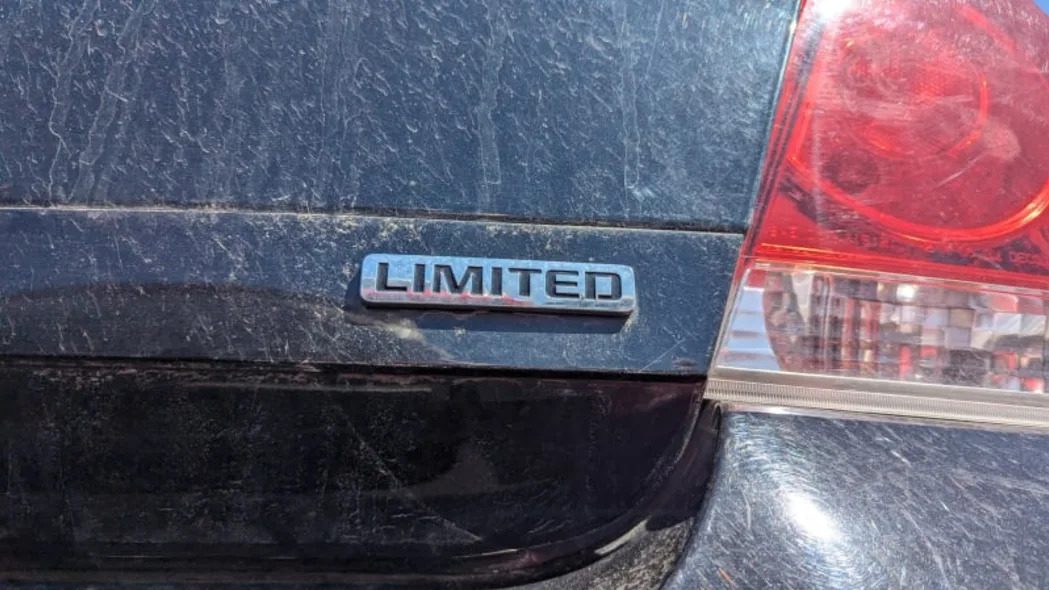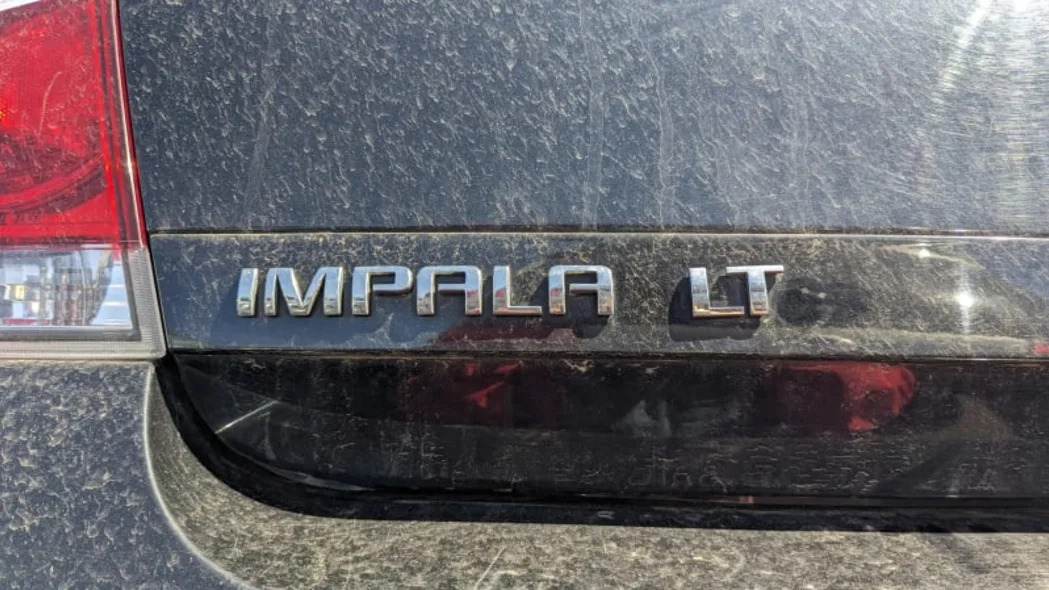Junkyard Gem: 2014 Chevrolet Impala Limited

What does a car company do when it introduces a completely revised new generation of a vehicle even while fleet sales of its predecessor remain strong? In the case of 21st-century General Motors, you keep making both versions. That’s what GM did when the tenth-generation Chevrolet Impala had its debut as a 2014 model, continuing to build the ninth-generation Impala for fleet-only sales through 2016 and calling it the Impala Limited. Here’s one of those not-so-rare-but-still-interesting machines, found in a Colorado car graveyard recently.
This 2016 Chevrolet police-vehicle brochure photograph shows the Impala Limited on the left and the regular Impala on the right. The steel wheels on the Limited look better than alloys on a cop car, in my opinion.

The tenth-generation Impala had moved from the aging W Platform to the global Epsilon II platform, making it a sibling to such machines as the Opel Insignia and Saab 9-5. It was built for the 2016 through 2020 model years, making it the final Impala. That was quite a run for a model dating back to 1958.

This car is a good old W-Body, a chassis design dating back to the 1988 Buick Regal, Pontiac Grand Prix and Oldsmobile Cutlass Supreme.

That meant that the 2014-2016 Impala Limited was a bit shorter and much less roomy inside than the Epsilon-based 2014-2020 Impalas, but so what? Fleet mechanics had been working on W-Bodies for many years and knew them well, plus there was plenty of production capacity available.

GM had taken a similar route with the Chevrolet Classic a decade earlier; the Malibu moved over to the Epsilon platform for 2004 (making it sibling to the Saab 9-3 and Saturn Aura), while the N-Body version remained in production for fleet-only sales through 2006.

The engine in this car is a 3.6-liter High Feature DOHC V6 with variable valve timing, rated at an impressive 302 horsepower and 262 pound-feet. These cars were quick thanks to their curb weight of just over 3,600 pounds.

The only transmission available was a six-speed automatic. In fact, the final model year for a manual transmission in a U.S.-market production Impala was 1973 (when a three-speed column-shift manual was base equipment on six-cylinder cars).

I was traveling and renting cars all over the country during the Impala Limited’s heyday, in my role as wise and respected Chief Justice of the 24 Hours of Lemons Supreme Court, and every Lemons staffer preferred the ninth-generation Impala to all other rental options during the 2006-2016 period. Even when poorly maintained, these cars always run pretty well, plus they came with decent audio systems and plenty of engine power. In fact, we often held drag races between various rental cars on the long straights at road-race tracks; here I am officiating at a race between a rental Maxima and a rental Impala Limited at GingerMan Raceway in Michigan (the Limited won, as it nearly always did).

I always appreciated the AUX input jack in the Impala Limited’s radio when I rented these cars; this very useful feature was still fairly difficult to find in rental-spec cars during the middle 2010s.

The tenth-generation Impala was bigger inside than the Limited and rode more quietly, but I was disappointed when the ninth-gen cars departed rental fleets.

I haven’t documented any first-generation Impalas in junkyards, but I have photographed used-up examples of the second, third, fourth, fifth, sixth and seventh generations (including Bel Airs, Biscaynes, Caprices and other members of the Impala family).
Clinkscales Chevrolet in South Carolina had deals on ninth-gen Impalas for you!
It was a whole new animal.



